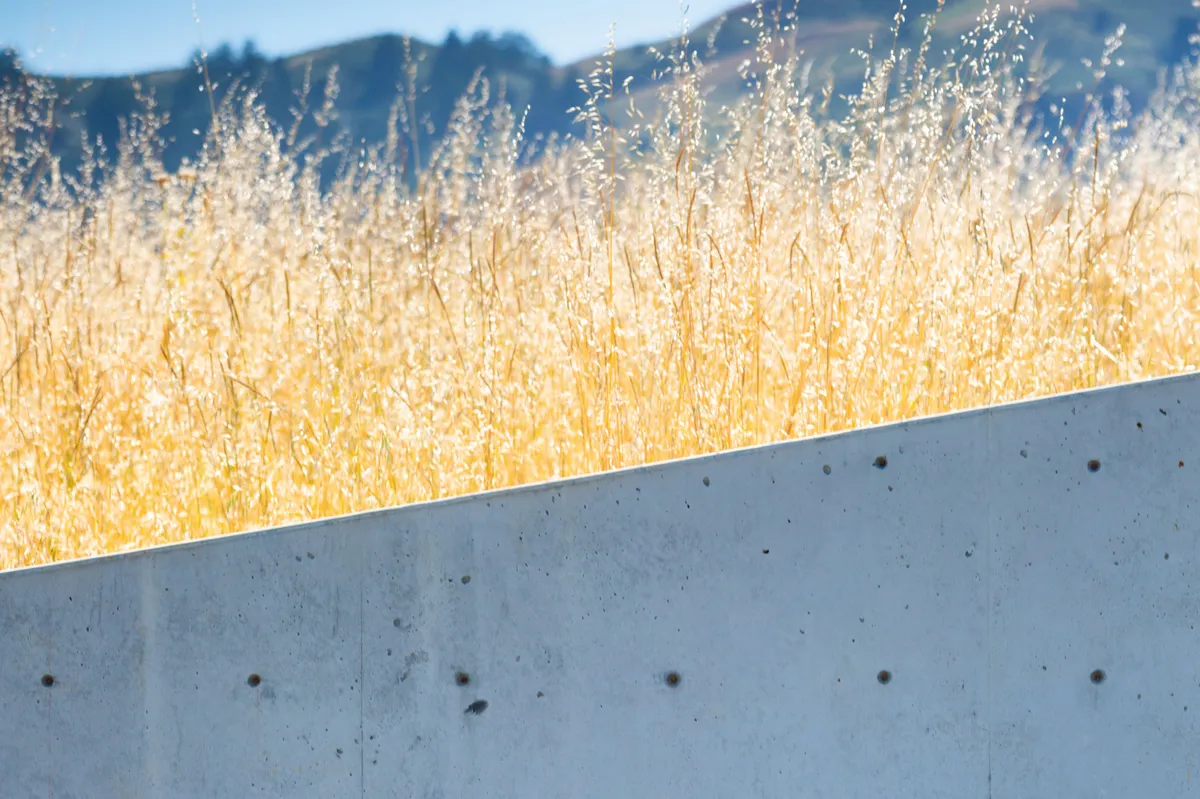At the cutting edge of design, blurring the boundaries between garden and landscape is becoming more and more frequent. This trend is generally expressed in terms of plant choice – the idea of ‘plant communities’ – but it is also possible to develop it in the context of the wider landscape. At one extreme, this involves embedding the property in its locale so that at first sight it does not seem to have a garden at all. This is what San Francisco-based designer Ron Lutsko has achieved at a property in a well-heeled enclave about 30 miles southeast of the city.
The garden Lutsko has designed is an ultra-naturalistic ‘non-garden’ in Portola Valley in California which has long, arid summers and short, cold and wet winters. Its soil is gravelly and dry. The garden surrounds a new modernist house designed by architect Jonathan Feldman which reflects an understated aesthetic, in that it is a single-storey residence of dark-stained, cedar boards and plate glass, hunkered down on the side of a small hill. Ron was commissioned to create a setting for the house that did not interrupt the link with the landscape. “The big question at a site like this is, ‘Where are the edges?’,” says Ron.

The terrace and garden area at the property is defined by low, concrete walls, creating as little interruption as possible with the wider landscape. A native Californian plane (Platanus racemosa) stands on the left.
The only planting concept is: there is no planting.

Plantings around the terrace include, in the foreground, the native grasses Stipa pulchra and Danthonia californica.

The non-native grasses of the valley, chiefly Avena fatua (wild oat), turn golden in high summer. The Australian flax, Dianella revoluta ‘Baby Roo’, stands out against the concrete below.

Concrete steps lead down to a guest house that echoes the house’s ‘barn-like’ architectural aesthetic.
Key plants

The glass-walled house in Portola Valley, California, is set in grassland, with the garden subtly delimited by fin-like concrete walls, partially obscured by vegetation.

The roof garden on top of the garage, made on 20cm of soil, contains achilleas and epilobiums, but is dominated by sedums. Ron says that such fleshy leaved plants are the only sure-fire success in drought conditions.




